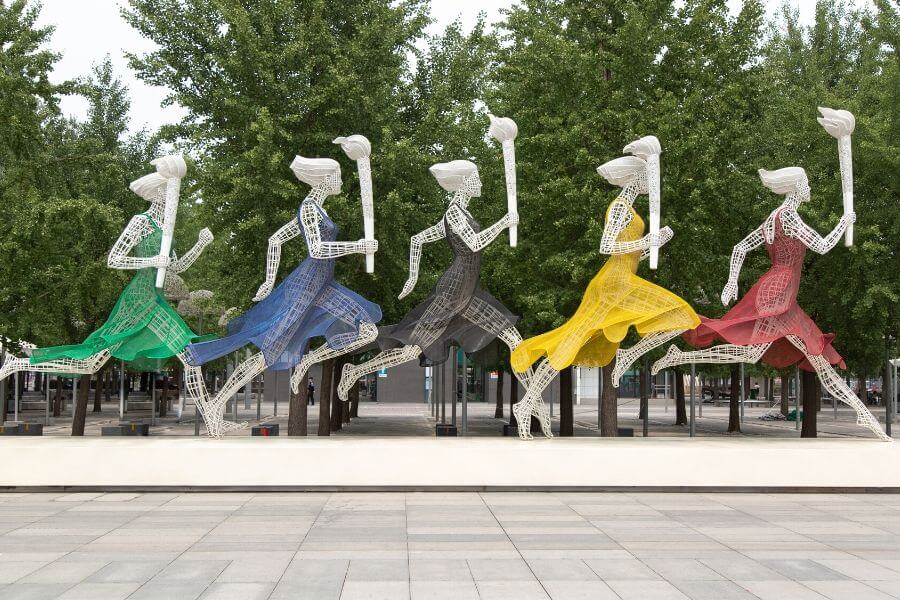
In cases where the evidence is completely controlled by one party and the other party has no way to collect, unfairness judgments may arise. To solve this problem, China has gradually set up the evidence presentation order system. Given it is designed to force the evidence controller to provide the evidence, some people call it China’s “evidence discovery and disclosure” system. However, there is a marked difference between the two. The evidence presentation order is a young mechanism, and the specific rules thereof need further improvement. Still, in addition to collecting evidence by themselves, the parties may actively employ this system.
I. What is evidence presentation order
Generally speaking, neither party will submit evidence against themselves in a lawsuit. If the key evidence is completely controlled by one party, and the other party has no way to obtain and submit the same to the court, the judgment will very much likely to be an unfair one.
For a long time, there was no such mechanism in the Chinese law to solve this problem, which is particularly prominent in IP infringement cases. For example, when the right holder claims against the infringer, he/she often needs to prove the profits obtained by the infringer. However, in most cases, the right holder is unable to obtain the financial books and business documents of the infringer. This has directly resulted in a low amount of indemnification for IP infringement in China for ages.
The White Paper of Intellectual Property Protection by Chinese Courts (2014) (2014年知识产权司法保护白皮书) issued by the Supreme People’s Court (SPC) shows that the average amount of statutory indemnification in patent infringement cases was only CNY 80,000 during 2008 - 2013, and the average amount of non-statutory indemnification was CNY 150,000, and 97% of patent infringement cases adopted the statutory indemnification. At the same time, the average amount of statutory indemnification in trademark infringement cases was only CNY 70,000, and it was CNY 15,000 in copyright infringement cases.[1]
To tackle this problem, when China revised its Trademark Law in 2013, the amended Article 63 specially provided that “In order to determine the amount of indemnification, the court may order the infringer to provide financial books and materials related to the infringement, provided that the right holder has tried his/her best to present evidence while such financial books and materials are mainly controlled by the infringer; if the infringer does not provide or provides false financial books and materials, the court may determine the amount of indemnification by referring to the claims made and the evidence presented by the right holder.” This is seen as the rudiment of the evidence presentation order in China.
After that, the SPC extended the scope of application of the above practices to all documentary evidence in the “Interpretation of the Application of the Civil Procedure Law of the People’s Republic of China” (关于适用《中华人民共和国民事诉讼法》的解释) (hereinafter “the CPL Interpretation”) in 2015. The party concerned may claim that the documentary evidence in question is in the hands of the other party, and apply to the court to order the other party to submit the same; if the court approves the application, but the other party refuses to do so, the court may presume that the documentary evidence claimed by the applicant is true. If the other party destroys the documentary evidence in question, the court may impose a fine and/or detention on it. It is worth noting that even if the evidence involves state secrets, trade secrets, and privacy, the party concerned can still be required to submit such evidence, provided that the examination of the same is not conducted publicly.
In 2019, the SPC revised the “Several Provisions of the Supreme People’s Court on Evidence in Civil Litigation” (最高人民法院关于民事诉讼证据的若干规定), expanding the scope of application of the evidence presentation order from documentary evidence to audio-visual materials and electronic data. Since then, China’s evidence presentation order has been initially established.
II. Is China’s evidence presentation order equal to the evidence discovery and disclosure?
Viewed from the purpose of the system, some would call the evidence presentation order as China’s evidence discovery and disclosure. In fact, China’s evidence presentation order is still young and needs further improvement, whereas the system of evidence discovery and disclosure has matured significantly in many countries. Therefore, we can only share our understanding of the difference between the two from a limited number of aspects.
First of all, taking the U.S. as an example, evidence discovery and disclosure can be divided into several stages. In the first stage, the discovery can be directly conducted by both parties out of court. Only at the disclosure stage, which requires the presentation of documents and physical evidence, does it involve requesting the court to compel the other party to disclose evidence. In China, all the procedures of the evidence presentation order need to be presided over by the court.
Secondly, the scope of application of China’s evidence presentation order is limited to documentary evidence, audio-visual materials, and electronic data, whereas the evidence discovery and disclosure may include any evidence related to the case.
Thirdly, China’s evidence presentation order can only be made to the other party of the case. If it is necessary to collect evidence from the persons not involved in the case, the parties need to apply to the court for evidence investigation and collection or evidence preservation, the relevant rules of which are different from the evidence presentation order (for the application to the court for evidence investigation and collection, please read the first post of this Series; for the evidence preservation, see the second post of this Series for details). In some countries, the evidence discovery and disclosure can be applied not only to the parties concerned but also those not involved in the case.
Finally, in some countries, refusing to disclose evidence as required by the court will not only lead to an unfavorable ruling, but will also result in such party’s right to defense and present evidence being limited. However, China has no such provisions at present.
III. How to apply to the court for an evidence presentation order
The parties shall submit an application to the court prior to the expiration of the time limit for presenting evidence. The application shall specify the following matters:
(1) The name or content of the evidence to be presented;
(2) What facts can be proved by the evidence and how important such facts are to the case;
(3) The proof that the evidence is in the hands of the other party.
IV. Application in practice
We have carried out incomplete retrieval of judicial cases in China, including about 80 cases involving the evidence presentation order, in which IP-related cases outnumber others. A typical case is Shanghai Bacchus Wine Co., Ltd. v. Tonghua Dongte Wine Co., Ltd. [Case No.: (2017) Jing 73 Min Zhong No. 202, ((2017)京73民终202号)], one of the “Top Ten Intellectual Property Judicial Protection cases in Beijing courts” in 2017. In this case, the plaintiff requested the defendant to disclose the relevant financial books to prove the profit obtained through the infringement, which was later approved by the court, but the defendant did not submit the relevant evidence. Therefore, the court, combining other evidence presented by the plaintiff, ordered the defendant to make indemnification as per the upper limit of statutory indemnification.
There were also some cases where the courts dismissed the application, because the evidence required to be disclosed was not key evidence for the fact-finding. For example, in Sichuan ShuNiu Real Estate Development Co., Ltd. v. Ping An Bank Co., Ltd. Chengdu Branch [Case No.: (2017) Zui Gao Fa Min Shen No. 1400, ((2017) 最高法民申1400号)], the SPC held that ordering the disclosure of evidence by the other party shall simultaneously meet two conditions: the documentary evidence in question is of great significance to the facts to be proved, and the facts to be proved will impact the judgment. Given the documentary evidence in question failed to meet the above conditions, the application was therefore dismissed.
Generally speaking, the evidence presentation order in China’s judicial practice still has a long way to go.
V. Prospect and suggestions
As the Several Provisions of the Supreme People’s Court on Evidence in Civil Litigation just being revised in 2019, there may be no supplement and change to the relevant rules of the evidence presentation order in the near future. Based on the dominant rule of “he who holds the affirmative must prove it” in China’s civil litigation, in the foreseeable future, the parties should still focus on the evidence collection by themselves.
However, with the continuous improvement of Chinese laws, we believe that the evidence presentation order mechanism will continue to develop and improve, and will be used more frequently. Even if the court dismisses such an application, the parties’ litigious rights will not be affected (except, of course, for the punishment imposed due to the abuse of this system). Therefore, if the key evidence is controlled by the other party, we suggest that the party concerned make good use of this system.
[1] 最高人民法院:《中国法院知识产权司法保护状况(2014)》
Photo by Sam Balye (https://unsplash.com/@sbk202)on Unsplash
Contributors: Chenyang Zhang 张辰扬 , Zhuo Yiwei 卓懿伟




